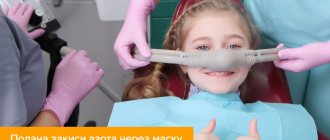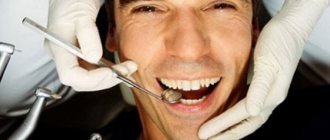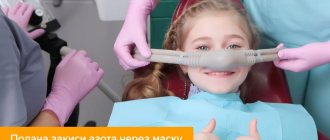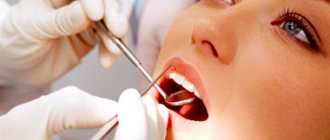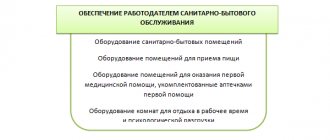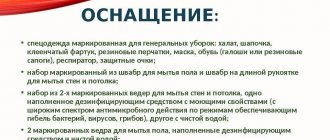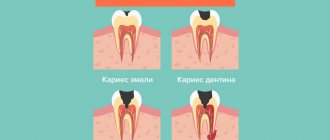Dentistry under sedation is a modern method that allows you to go through an unpleasant procedure with comfort. Parts of the brain responsible for increased levels of anxiety are temporarily blocked with anesthetic drugs. Under their influence, a person quickly calms down, falls into a shallow sleep, while remaining conscious. Ideal conditions are created for the doctor’s comfortable work, helping to significantly improve the quality and efficiency of procedures and perform a large volume in one appointment.
What is sedation?
Sedation is a process of relaxation and anxiety relief. The word itself comes from the Latin “sedatio”, which translates as “calm”. In dentistry, various sedatives are used for these purposes, which are administered by inhalation or intravenously. Thus, it is customary to distinguish several types of such anesthesia:
- inhalation sedation: for this direction we use the inert gas xenon, which does not anesthetize, but relaxes before introducing the main anesthesia (usually local, that is, infiltration or conduction, which allows you to anesthetize the tissues of the oral cavity).
- intravenous sedation: sedatives are administered through a catheter directly into a vein. The patient becomes drowsy (sleeping or dozing),
- general anesthesia: drugs are administered intravenously (inhalation is also possible, but this type of anesthesia is not used in dentistry). The person goes into medicated sleep for several hours.
Types of sedation
Experts distinguish the following types of sedation:
- superficial
sedation is caused by maximum relaxation of the body and suppression of fear with complete preservation of all body functions and the ability to verbally communicate if necessary; - deep
sedation is characterized by a state close to general anesthesia, that is, consciousness is completely turned off and basic reflexes are somewhat suppressed.
In dentistry, superficial sedation is actively used, which is carried out by introducing certain doses of drugs into the body by injection or orally. The mask method of suppressing consciousness to a state of euphoria is provided by inhaling nitrous oxide vapor. These drugs have a moderate inhibitory effect on the central nervous system and are considered the most optimal and safe in pain relief during the treatment process.
Anesthesia and deep sedation are carried out only in specialized dental surgery departments with experienced anesthesiologists, all the necessary equipment (ventilator) and medications for emergency care (pressure drop, cardiac arrest). In this case, the patient undergoes mandatory training.
How is intravenous sedation different from general anesthesia?
The main difference is in the drugs used. As a consequence - in the duration of medicated sleep, the quality and effect of anesthesia, the severity of side effects and consequences, as well as in the subsequent rehabilitation of the patient.
- number of drugs: with intravenous sedation, only one drug is used, and it can be in different dosages (and, of course, is selected strictly individually based on the results of in-depth diagnostics). The patient will be in medicated sleep during the entire period of the operation, or in a relaxed state, half asleep. With general anesthesia, 2 or more drugs are used, including tranquilizers and narcotics, which puts a greater burden on the body,
- anesthetic and analgesic effects: during general anesthesia all receptors are “switched off”, during sedation - partially, which occurs due to a decrease in general sensitivity,
- consequences: after general anesthesia, side effects may appear within 2-3 days after surgery. This is not just dizziness and confusion, but also lethargy and even hallucinations. With sedation, there is no need for hospitalization or a long stay in the clinic - complete recovery occurs within 1-2 hours. All side effects are short-term and mild.
Prices for dental treatment under sedation
The sedation service at the clinic is paid. Its cost depends on the drug administered:
- Nitrous oxide - from 1500 rubles.
- Propofol - from 6500 rubles.
- Sevoran - from 7500 rubles.
Session time is 30 minutes. Consultation with an anesthesiologist, diagnostics and tests are paid separately.
Some sedatives are classified as weak narcotic drugs, the circulation of which is strictly regulated by the state. Therefore, it is necessary to check the institution’s license to use them and to provide anesthesiology. The presence of such a license will guarantee the legal implementation of this procedure. And also make sure that resuscitation equipment is available.
Which is better, sedation or general anesthesia?
Intravenous sedation is carried out using lighter and simpler drugs, so it is the more preferable method of pain relief when carrying out large-scale work. And not only in dentistry, but also in many other branches of medicine. Fewer side effects, including prolonged action (with general anesthesia, they can appear even within a year after treatment), less stress on the liver, kidneys, cardiovascular and nervous system.
In general, the advantages of intravenous sedation are as follows:
- you fall asleep - you don’t feel pain, you don’t see how treatment or surgical procedures are carried out, and what instruments the doctor uses (and all this causes extreme stress for those who are afraid of the dentist),
- all treatment is carried out at one time, which is especially important in case of multiple scattered caries or in case of total restoration of teeth on implants,
- the quality of treatment improves and the risk of postoperative complications decreases, since the doctor is not distracted by the patient’s emotions,
- It is possible to carry out treatment in patients who are not affected by classical “freezing” or have allergic reactions to the drugs used.
With us you will stop being afraid of dentists! Individual selection of drugs, the most modern equipment and certified doctors who professionally work with all types of anesthesia.
Enroll now
Recommendations for using sedation
In dentistry, this method is used if the patient wishes, when he wants to receive the most comfortable and safe treatment. Dental specialists recommend resorting to drug sedation in cases that require the patient to remain in the dental chair for a long time. This may include surgical manipulation of the maxillary sinuses and other long-term operations.
Sedation is very convenient during orthopedic procedures, which can last up to 12 hours and involve putting the patient into a sleep state. In case of diseases of the cardiovascular system, psychiatric and allergic reactions, the possibility of using sedatives is discussed individually in order to avoid undesirable manifestations.
Modern specialists are actively finding the use of drug sedation in the field of prosthetics, implantology and surgical dentistry. Sedatives are widely used because they are absolutely safe and do not have a narcotic effect on the body and are not addictive. The great advantage of using sedation in dentistry is the parallel use of the necessary equipment and a special cardiac monitor, with which it is possible to monitor the patient’s condition, which almost completely eliminates any complication.
How is treatment performed under intravenous sedation?
The essence of using intravenous sedation is that certain anesthetics are introduced into the body, which put the person into sleep. The drug itself and its dosage are selected based on the patient’s weight, health status, and the duration of the procedure. If necessary, the drug can be reintroduced during surgery.
A catheter is inserted into a vein in the arm through which the medication is administered. The catheter remains in place until the end of the entire treatment, as repeated administration of the drug may be required.
The operation is performed on an empty stomach: you cannot eat or drink for 6 hours before sedation. The procedure is not limited in time. The patient wakes up naturally within 20 minutes after the end of the drug and is under the supervision of specialists for a maximum of 1-2 hours who will monitor their health.
After treatment under sedation, it is strictly not recommended to drive, as concentration decreases. There are no more restrictions.
Treatment and implantation under anesthesia and sedation
Treatment under anesthesia is the norm in modern dentistry. We tell you who and in what situations so-called “strong” anesthesia is suitable, and why anesthesia is not as dangerous as it seems.
When did anesthesia and sedation first begin to be used in dentistry?
Like sedation, Sevoran anesthesia is used effectively and widely in dental practice. Nitrous oxide (sedation) has been used for dental treatment since 1948. And the anesthesia drug “Sevoran” was developed by the American corporation “ABBOT Laboratories” and has been successfully used for treatment in the USA, Japan and Western Europe for more than 10 years. It has also gained popularity in Russia due to the fact that it acts quickly (the patient easily falls asleep and wakes up), rarely causes allergic reactions or side effects, and is quickly and without consequences eliminated from the body.
How is sedation different from anesthesia?
When using sedation, you are conscious, can move and talk, and understand what is happening around you. But at the same time, you feel relaxed, without anxiety or worry. Sedation can be compared to the state when you are about to fall asleep.
On the contrary, anesthesia is a deep sleep, you are not aware of yourself, you cannot move or talk.
In what cases may anesthesia or sedation be required?
In dentistry, anesthesia and sedation are used for both children and adults.
Indications for treatment under anesthesia in children:
- Age up to three years. Children are practically unable to sit still in a chair; it is difficult for a doctor to provide high-quality dental treatment
- Anesthesia and sedation are also used for children, when, for example, four teeth need to be treated at a time and the procedure takes two to three hours
- Strong fear of treatment, which still could not be relieved during the adaptation process
- Some concomitant diseases, developmental features that limit the possibilities of contact with the child.
In each specific case, the dentist discusses all possible options with the parents, and the decision is made jointly.
For adults, anesthesia is indicated:
- with a very large volume of therapy, with complex treatment - with the participation of all necessary specialists at once (from therapists to surgeons and implantologists)
- for complex surgical interventions, for example, removal of impacted (unerupted) teeth
- for dental phobia (insurmountable fear of dentists)
- with a strong gag reflex, which does not allow treatment of distant teeth.
Treatment under anesthesia is an excellent opportunity to solve as many dental problems as possible in one visit. Of course, this method of treatment also has contraindications. Each individual case is discussed with the attending physician.
What drugs are used to relax or induce sleep?
To put the patient into a relaxed state, the Smile clinic uses nitrous oxide with oxygen. Sweetish inert gas is supplied through a mask, you relax after just a few breaths.
To put one to sleep, two anesthetic drugs are used: Propofol and Sevoran. “Propofol” is administered intravenously into the body, “Sevoran” is administered through a breathing mask.
Most likely, you or your child will be put into a state of sleep using Sevoran - this is the most modern anesthetic drug. According to foreign studies, Sevoran is less likely to cause complications and is better tolerated by patients.
Is anesthesia dangerous?
Complications can arise after any medical procedure, even from a pill or a harmless injection. When using anesthesia, the risk of complications is low because you will be examined several days before the procedure. This allows you to exclude possible contraindications and select the correct dosage of the drug.
Severe complications during anesthesia occur extremely rarely. For example, malignant hyperthermia, a condition in which the temperature suddenly rises to 39-42 ° C. According to various sources, it can occur with a frequency of 1: 10,000-1: 220,000 general anesthesia in adults and 1: 3,000-15,000 anesthesia in children. Predisposition to malignant hyperthermia is transmitted genetically. .
What examination will I undergo before treatment under anesthesia?
During anesthesia, the load on the heart increases; the procedure is undesirable for people with certain cardiovascular diseases. Therefore, first of all, you will have an electrocardiogram. You will also have your urine tested for a general analysis, your blood tested for coagulation, biochemistry, general analysis, HIV and syphilis, and undergo fluorography or chest x-ray. Then you will be seen by a therapist, and your child will be seen by a pediatrician.
The last stage of the examination is a consultation with an anesthesiologist, only he gives permission for treatment or implantation under anesthesia.
How to prepare for treatment under anesthesia?
You should not eat or drink 6 (six) hours before the procedure. Such rules have been introduced to avoid complications during anesthesia. To make it comfortable for you to spend several hours in the dental chair, wear comfortable clothes made of soft fabrics.
How is treatment performed under anesthesia? What doctors are in the operating room?
Throughout the entire procedure, an anesthesiologist-resuscitator, a dentist and two nurses are present in the operating room. A dentist and an assistant treat teeth or install implants, and an anesthesiologist and nurse anesthetist monitor the patient’s condition.
The Smile clinic has all the necessary equipment for emergency resuscitation. If complications arise, the entire medical team will begin resuscitation, following the standard of care.
What happens after the procedure is completed?
Depending on the volume and complexity of dental treatment, anesthesia can last from 0.5 to several hours. The patient wakes up a few minutes after all manipulations are completed. Some people immediately feel invigorated, others feel a little dizzy or have a sour taste in their mouth - these are the main unpleasant sensations. As a rule, after thirty to forty minutes the patient can go home on his own.
How will you feel?
Nothing, because sedation relieves all unpleasant sensations. At the same time, it can be superficial - you will be in a state of half-asleep or half-asleep (answering doctors’ questions, periodically falling asleep, but remaining in a relaxed state), or complete, when you will be sleeping throughout the entire time the operation lasts . Here the choice is yours. But in both cases you will not feel anything. The maximum is the “moving” of the instruments in the oral cavity, because you understand that the doctor is doing some kind of work.
Comfortable treatment without pain! We carry out thorough diagnostics, select medications and dosages strictly individually. It's safe here!
Enroll now
Dental treatment in a dream has disadvantages!
- If the degree of relaxation is strong, the patient does not hear the doctor and does not control the body, complicating the treatment process;
- Strong relaxation increases the risk that the patient will choke on saliva or working fluids, which again complicates the dentist’s work - the doctor must control the situation and take timely measures;
- This treatment method is more expensive.
- Feedback is lost – between the patient and the doctor;
- It is impossible to ensure natural articulatory movements in this state, which practically eliminates the possibility of recreating an ideal bite, i.e. The doctor is forced to act approximately, “by eye.”
The method has a number of contraindications, including:
- Pathology of blood vessels and heart function;
- Asthma, respiratory diseases;
- Recent heart attack;
- Lactation period, pregnancy;
- Mental disorders;
- Infectious diseases;
- Pregnancy;
- Age up to three years;
- Traumatic brain injuries;
- Epilepsy and some other mental illnesses;
- State of alcoholic intoxication;
- Alcoholism, drug addiction.
Sedation does not exclude pain, therefore, along with sedation, anesthetic drugs are also used.
Sedation is accompanied by amnesia - complete or partial, the patient remembers practically nothing.
Will it hurt during and after treatment?
No, there won't be any pain either. 1-2 hours after treatment, when the anesthesia wears off, tolerable pain may occur. It is associated exclusively with tissue injury. The doctor will prescribe painkillers for you: whether to take them or not is up to you to decide, based on your own condition. More than half of our patients after dental implantation take painkillers only for the sake of prevention - so that the pain does not overtake them in the middle of the night while sleeping, about 30% do not take them at all, and the rest do not take them as prescribed, because there is slight discomfort.
What if something goes wrong? Is this really safe?
Yes, it is completely safe: the administration of the anesthetic, as well as monitoring the patient’s condition, is carried out by professional and licensed anesthesiologists. The participation of professional anesthesiologists in the operation who monitor the patient’s condition allows the implant surgeon or maxillofacial surgeon at our clinic to fully concentrate on the operation. Constant monitoring of all vital indicators of the patient’s health status is mandatory.
In addition, there is an ambulance station in close proximity (up to 1 km) from each clinic. And this is an additional guarantee of your safety, because in case of complications, every second will count.
“Like you, we are sincerely interested in safe treatment and high-quality restoration of your health, so we make every effort to provide comfortable treatment: we focus on diagnosis, the correct selection of medications, and monitoring the condition during surgery.”
Namdakov Nikolay Vladimirovich maxillofacial surgeon, implantologist, orthopedist, work experience over 18 years make an appointment
What do patients say about treatment under sedation?
Most of our patients sleep during surgery and wake up after the doctor has finished treatment. Many people note that they sleep well during this time. If they remain conscious (lighter sedatives are used), then they do not feel pain, but there is a feeling of a slight “crawling” in the mouth from the knowledge that the doctor is removing/treating teeth or implanting implants.
Svetlana Yurievna
“They sat me at a table, put me on an IV, then transferred me to a chair and I don’t remember anything else. Before the operation, the doctor noted that he would look at my condition and see how much medication I would need. To be honest, this scared me. Because I thought that at some point the sedative would end, it would hurt and I would feel it. But nothing like that happened, I turned my head - they put additional medicine in my IV, and everything ended well. I am immensely happy!”
- treatment WITHOUT FEAR and pain
- guaranteed safety
- minimal health risks
- with condition monitoring and professional supervision
watch a video with the patient
How to prepare for treatment
To ensure that sedation does not have any negative effects on the patient’s body, a thorough diagnosis of the health status before it is necessary - it will allow you to exclude possible contraindications, choose medications, and also find out what difficulties may arise during medicated sleep.
Tests and examinations before treatment under sedation
Before treatment or dental restoration under anesthesia, you will need to take a number of tests and undergo some examinations. You can take tests directly in our clinics completely free of charge: they are included in all types of dental implantation.
- general and biochemical blood test (AST, ALT, urea, creatinine, total protein, glucose, electrolytes), valid for 14 days,
- blood test for HIV, hepatitis C and B, syphilis, blood group and Rh factor, valid for 3 months,
- hemostasiogram or coagulogram (blood test), valid for 1 month.
All of the above tests are performed directly in our clinics completely free of charge. It is also additionally necessary to provide the results of the following examinations:
- ECG (electrocardiogram),
- Chest x-ray or fluorography – research results for the last 6 months are accepted: images or a specialist’s opinion (description of the images),
- For patients over 50 years of age, consult a general practitioner or cardiologist.
In a number of laboratories, these tests can be performed in a comprehensive manner: medical companies are developing special profiles called “hospital” profiles, in particular “for hospitalization in a surgical hospital.”
Lifestyle before treatment under sedation
- the operation is carried out without signs of acute respiratory viral infections and other infections. If you feel sick or become ill, be sure to notify your personal manager to reschedule your surgery,
- food: on the day before surgery, a light breakfast is allowed: dry toast, tea or weak coffee without milk. If the operation is in the morning, then you need to limit yourself to dinner only,
Important! Before surgery, under sedation, you cannot eat for 6 hours!
- drinks: stop drinking liquids 2 hours before surgery,
- alcohol: prohibited 2-3 days before surgery,
- taking medications: orally – no later than 2 hours before surgery,
- women are advised not to use cosmetics and must also remove all coating from their nails,
- After the operation, we do not recommend driving, so you must come to the clinic by taxi/public transport or ask someone you know to bring you.
Follow the link to study a detailed reminder about preparing for implantation.
About the dangers of sedation
Taking sedatives comes with risks. Sedation should not be used if:
- Pneumonia, severe asthma;
- Anemia;
- Diseases of parenchymal organs;
- For pheochromocytoma and other pathologies of the adrenal glands;
- With thyrotoxicosis in severe form;
- Diabetes;
- Epilepsy attacks;
- Taking glucocorticoid drugs for a long time.
Before the procedure, the patient must undergo an examination - general urine and blood tests, and an ECG.
It is necessary to consult a doctor if you have chronic diseases, including cerebrovascular accidents, vascular and heart diseases.
When treating children, sedation is not recommended for adenoids and difficulty breathing through the nose.
Are there any disadvantages to sedation?
Naturally, dental treatment or implantation under general anesthesia has certain disadvantages. In particular, the need for rehabilitation after the administration of the drug and a fairly large list of contraindications. However, our clinic conducts a thorough diagnosis of the body’s condition before using any anesthetics. If the doctor identifies certain risks, you will be denied sedation and will not take any risks. In addition, by working with professional anesthesiologists, any unpleasant consequences are reduced to a minimum.
Sedation in dentistry vs general anesthesia
General anesthesia disables basic reflexes - coughing and gag. This means that there is a risk of respiratory dysfunction.
Sedation is an alternative to general anesthesia. It allows you to perform extensive and complex dental procedures in a comfortable environment for the patient and the doctor. At the same time, there is feedback from the patient and there are no risks characteristic of general anesthesia.
The advantages of sedation over general anesthesia include:
- no blocking of basic reflexes;
- minimum contraindications;
- soft and gentle impact;
- rapid recovery of consciousness.
Dental treatment during sleep is carried out using certified medical preparations. A specialized specialist monitors the patient’s condition throughout the entire dental treatment.
